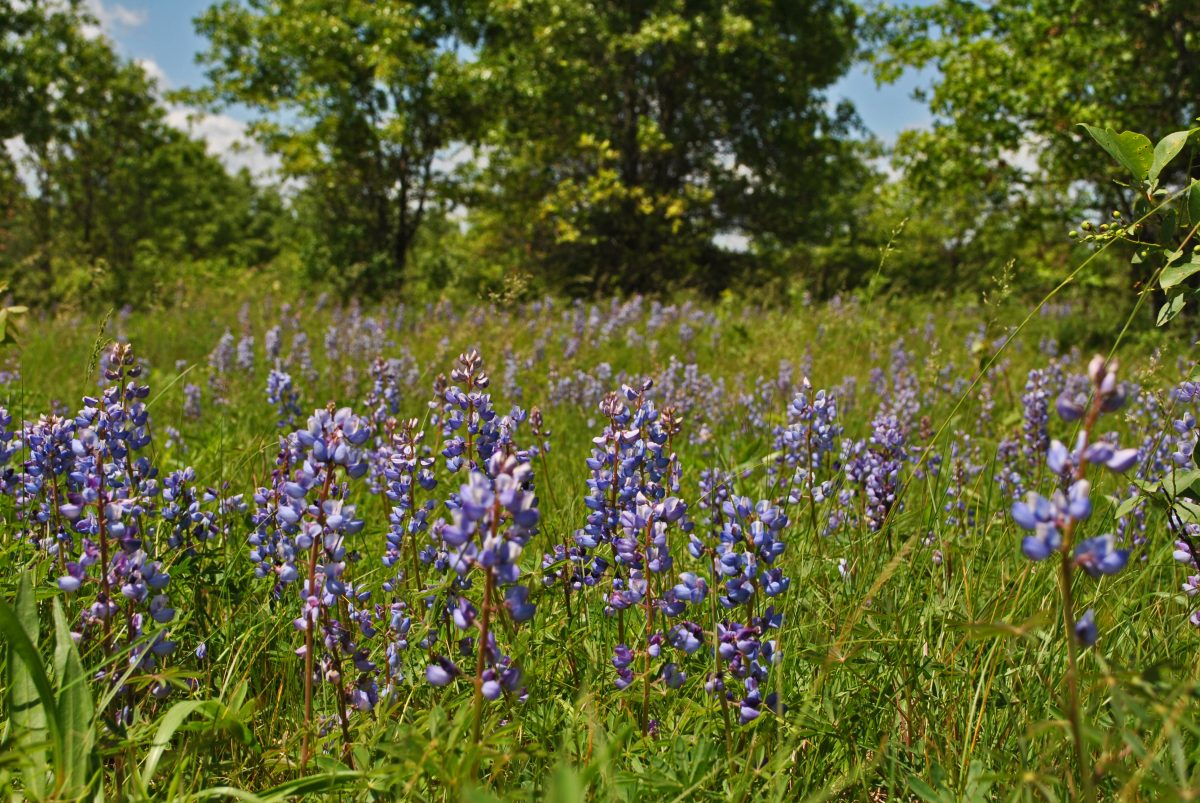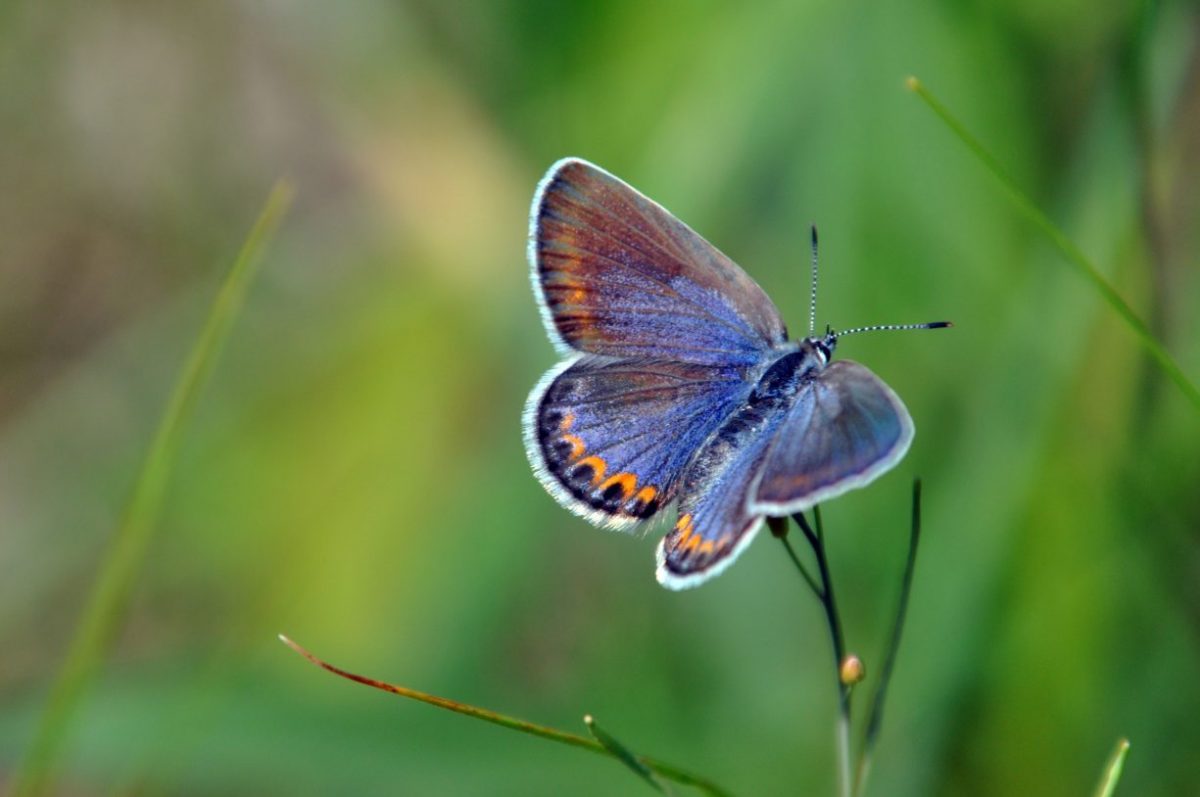Subsisting on the leaves of wild lupine for three to six weeks, Karner Blue Butterfly caterpillars excrete small amounts of liquid from a gland on the top of their backside. This secretion provides sustenance for ants, who in turn offer these larvae protection from some predators and parasites.
This reliance on one another, like the Karner Blue Butterfly caterpillar’s dependence on wild lupine as its only food source, illustrates both the beautiful and precarious balance necessary for maintaining natural ecosystems. For the Karner Blue, its survival has been greatly affected by not just its larvae’s reliance on a single food source, but the entire species’ inability to adapt to different habitats — not to mention, human-caused threats.
“Without disturbance activities such as fire and grazing, shrubs and trees invade the open savanna and barrens and shade out the grass and herbaceous plants, including wild lupine.”
Although its range is wide — spanning from the Great Lakes region to the Atlantic — the Karner Blue Butterfly is found only in small patches. However, because they reside in oak savannas and pine barrens that experience long periods of winter snowpack, the insects are only found along the northern edge of wild lupine’s range. This makes long-term survival difficult.
Added to the endangered species list in 1992 because of population declines — a result of habitat loss and destruction — the Karner Blue Butterfly once occupied a nearly continuous band across 12 states and Ontario. Over the last century, its numbers have decreased by nearly 100 percent across its historic range, according to the U.S. Fish and Wildlife Service (FWS). In more recent years, however, the species has stabilized throughout much of Wisconsin, Minnesota, New Hampshire and New York but continues to suffer as a result of land development and a lack of natural disturbance.
According to FWS, events such as wildfires and grazing by large mammals are important for the Karner Blue’s survival. “Such disturbance helps maintain the butterfly’s habitat by setting back encroaching forests, encouraging lupine and flowering plant growth,” FWS website reads. “Without disturbance activities such as fire and grazing, shrubs and trees invade the open savanna and barrens and shade out the grass and herbaceous plants, including wild lupine.”

Fragmentation of the landscape — also due to a lack of natural disturbance — has been cited by the Xerces Society as a leading cause of population decline as well; this has led to smaller and often more isolated populations.
Today, the oak savannas and pine barrens that support Karner Blues “are almost as rare as the butterfly itself,” FWS reports. These savannas offer dry habitat full of drought-resistant plants, such as bluestem, and scattered oak trees. This diminishing habitat also supports other plant and animal species, including the rare Persius duskywing and the frosted elfin — also butterflies; Blanding’s turtle; the eastern massasauga rattlesnake; the prairie fame flower; and others.
Often, the recovery of the Karner Blue has focused on the conservation of its habitat — a move which also helps these other species — as the insect requires a very specific environment and is unable to adapt to changes.
While work is being done both by FWS and individual states, the Karner Blue Butterfly remains on the endangered species list for now.
Learn how you can help.





